Every day, millions of gym goers do crunches in hopes of getting a tighter, smaller waist. The problem is that the basic crunch is ... basic. Spot reduction isn't possible; having visible abs is a byproduct of nutrition, exercise, and overall caloric expenditure.
According to science, crunches have almost zero impact on body composition. In a recent study, 14 subjects were instructed to do five abdominal exercise routines per week for six consecutive weeks. As expected, no statistically significant changes in body composition were noted other than the subjects' ability to do more crunches.
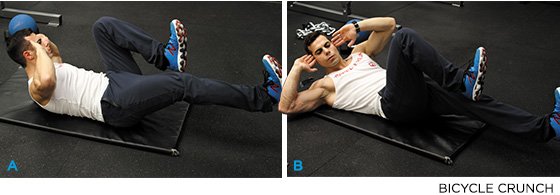
Despite this fact, ab freaks still bang out crunch after crunch, day after day, wasting countless hours on a less-than-stellar abdominal exercise.
Abdominal exercises can still be beneficial to your program. You just want to make sure you choose the most effective moves. It's also important that you know the facts regarding the anatomy and function of your abs. Let's cut through the clutter and learn some valuable insight on waist size, ab anatomy, and the best core exercises.

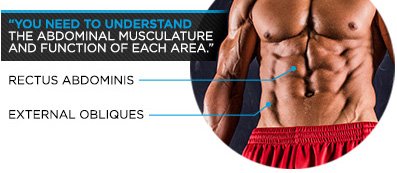
Before you even think about training and dieting for a ripped midsection, you need to understand the abdominal musculature and the function of each area. This knowledge is powerful because it strengthens the mind-muscle connection. It's been proven that a strong mind-muscle connection recruits more muscle activity.
Rectus Abdominis: Commonly referred to as the six-pack, the rectus abdominis is sheet of muscle which runs laterally from pelvis to sternum. It originates at the pubis and pubic symphosis and inserts into the fifth, sixth, and seventh ribs. The rectus abdominis has thin bands of connective tissue that gives it that washboard appearance. Its basic function is to flex the trunk, increase abdominal pressure, and stabilize the pelvis.
External Obliques: These muscles run diagonally down and toward the midline of the body. They originate on the lower eight ribs and insert along your pelvis, at the bottom of your pubic area, and into the linea alba, or the line of connective tissue down the middle of the rectus abdominus. These muscles rotate and laterally flex the trunk. They also compress the abdomen.
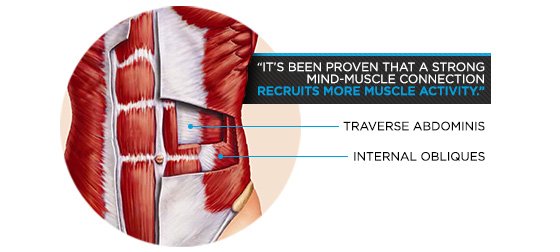
Internal Obliques: As the name states, these muscles lie below the external obliques. They run diagonally upward and toward the midline of the body. They originate along the hip bone and ligaments and insert into the lower three or four ribs. The internal obliques rotate and laterally flex the trunk and compress the abdomen.
Transverse Abdominis: Also referred to as the transversus, this is the deepest layer of muscle. It lies below the internal obliques and wraps around the abdominal area. This is your factory-installed weightlifting belt, basically. The transverse abdominus originates on the lower six ribs and along the hip bone and ligaments and then inserts into the linea alba and pubic crest. It compresses the abdomen.
Now that you understand how your abdominal muscles work, it's time to go over how to best strengthen them. To identify the most effective movements, a study was conducted by Peter Francis, Ph.D., and Jennifer Davis, M.A., at the San Diego State University Biomechanics Lab. They used electromyography to measure the muscle fiber activity during abdominal exercises.
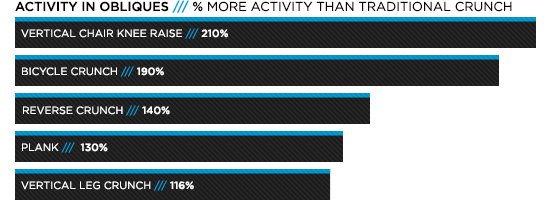
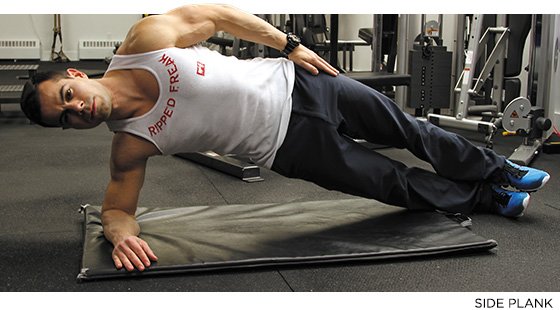
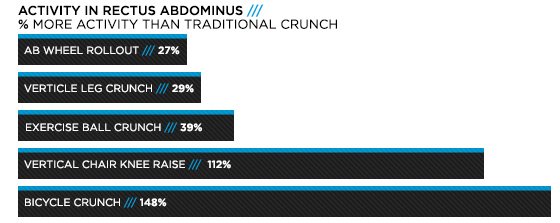
References
- Staiano AE, et al. Body mass index versus waist circumference as predictors of mortality in Canadian adults. J Strength Int J Obes (Lond). 2012 Nov;36(11):1450-4.
- Vispute SS, et al. The effect of abdominal exercise on abdominal fat. Cond Res. 2011 Sep;25(9):2559-64.
